The first few pages are the same in most Bullet Journals and usually, consist of key and index pages. A key summarizes the symbols you want to use in your BuJo.
Then comes the index. This is the table of contents for your Bullet Journal. This grows together with the content. Whenever you create a new page, you enter the page number and topic of the page in your index. You can see the most straightforward version of both the BuJo elements in the image shown below.
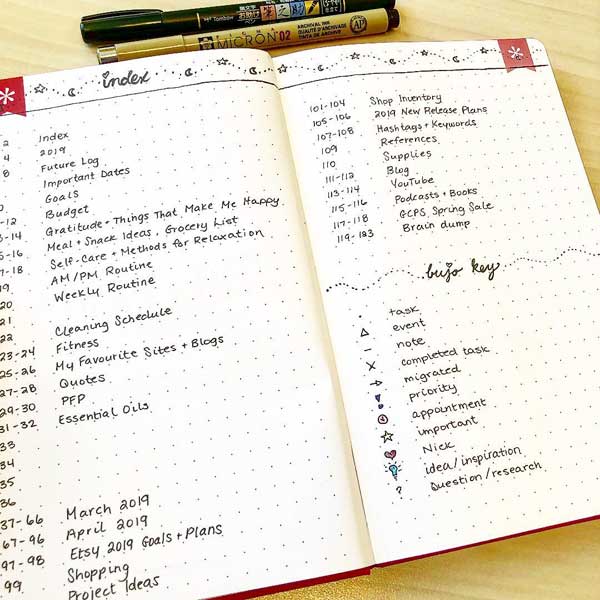
The Bullet Journal Index
The Table of Contents is the start of each Bullet Journal. Since the Bullet Journal does not have an order of content, like some classic planners, it is vital to have a system with which you can find your pages again. That’s what the index is for.
In the notebooks of Leuchtturm1917, the pages are already numbered, and some pages are pre-printed for the index. In any other notebook, you simply do it yourself.
Creating the index is easy. Flip to the first blank page of your notebook and write “Index” or “Table of Contents” at the top.
Below that, you note down your pages with content and page number. The design of your index is up to you.
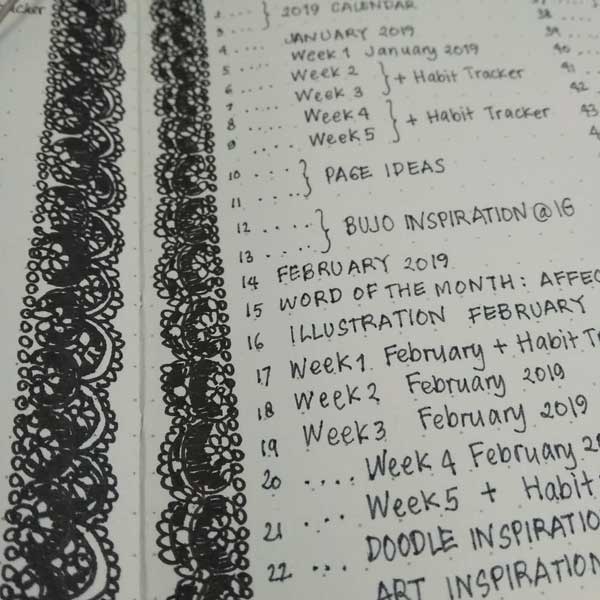
Some tips for creating an index
- First, write the topic, then the page numbers.
- Reserve at least four pages for your Bullet Journal index.
- Write down the topics as detailed as you would like to find them again.
- Mark important pages in color, with washi-tape, or with symbols.
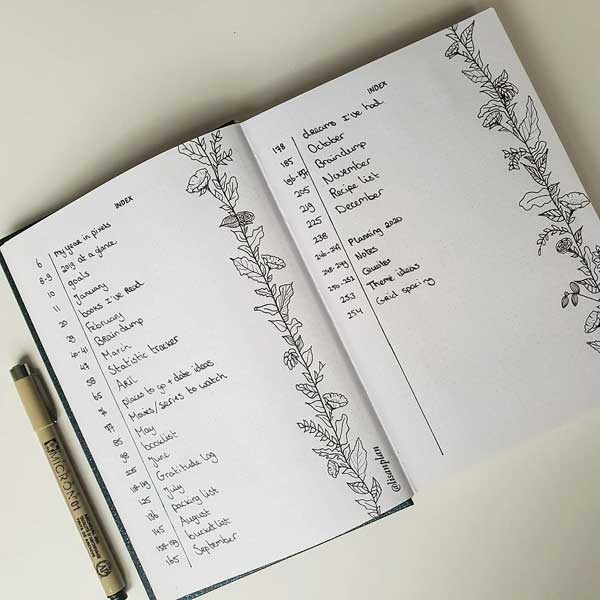
More variations:
- Instead of a total index, you can create a calendar index and a collection index.
- Alternatively, you can make different directories for different topics.
- If you start your index at the back of your notebook, the question of space does not arise.

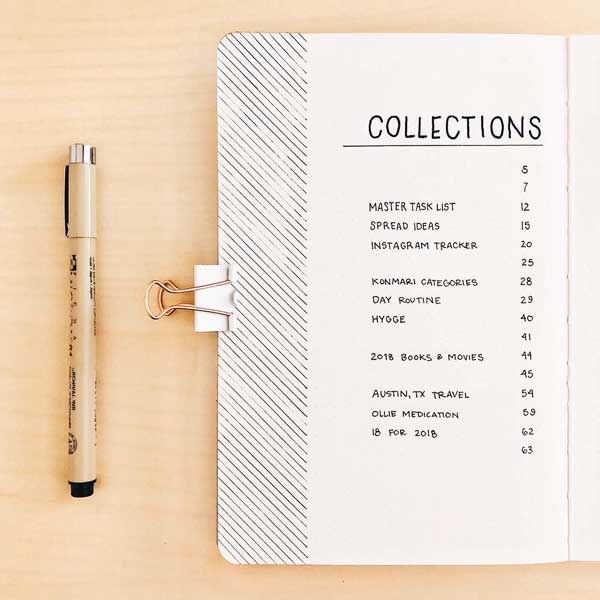
The Bullet Journal Key or Legend
The key is your symbol directory. You need it as a reference for Rapid Logging. Here you can see which characters in your Bullet Journal have what meaning. These are the mini icons that identify specific types of notes, appointments, tasks, and so on.

We often use the first page or the inside cover of a Bullet Journal to present the legend in a clear manner. Alternatively, you can create it as a card and use it as a bookmark. Gluing with a removable Washi-Tape is also a possibility. Not writing it directly into the book allows you to change the symbols over time if you find that your defined symbols do not suit you.
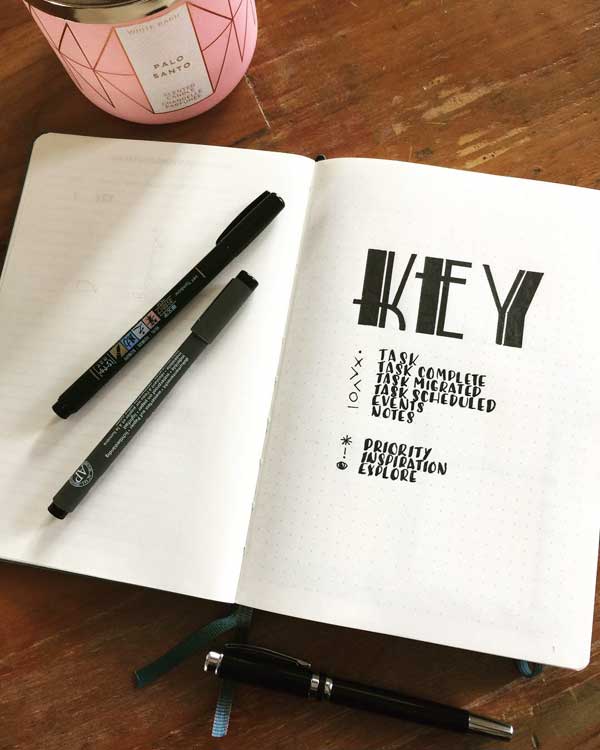
Bullet Journal key is usually minimalist. Ryder Carroll has already thought about some symbols for this, but many people change them. That’s the beautiful thing about Bullet Journals. It’s a customizable system, and you can completely customize your key according to your needs.
We can individualize the key depending on the person and the use of the journal, but it fulfills the following functions through the various symbols:
- “•” stands for a task that still has to be done
- “X” indicates that the task is done
- “>” and “<” indicate that the task has been postponed to the next day, week, or time in the future
- “-” stands for a note
- “O” for an event or appointment,
- “*” indicates that a task or appointment is particularly important.
- In case a task has ended and is no longer relevant, then delete it.
We use standard bullet points for tasks. If you think about your to-do list for the next day, you will list all aspects one below the other. So far, so good.
To mark a task as completed, we make a cross at that task item. However, if a to-do has not been completed, but is placed on the next (or another) day, the point becomes an arrow to the right.

Some tasks contain dates, which are in the future. Therefore, if I have to call a restaurant to reserve a table for Friday night, and I’ve done that successfully, I make an arrow to the left from the point. This means I have a fixed date for it.
We list events or dates that are scheduled for the day with a circle. So when Friday has come, I draw a circle in the Bullet Journal and write after it when and what I plan to do.
We mark everything else that we remember or just want to record with a simple indent. These are simply notes.
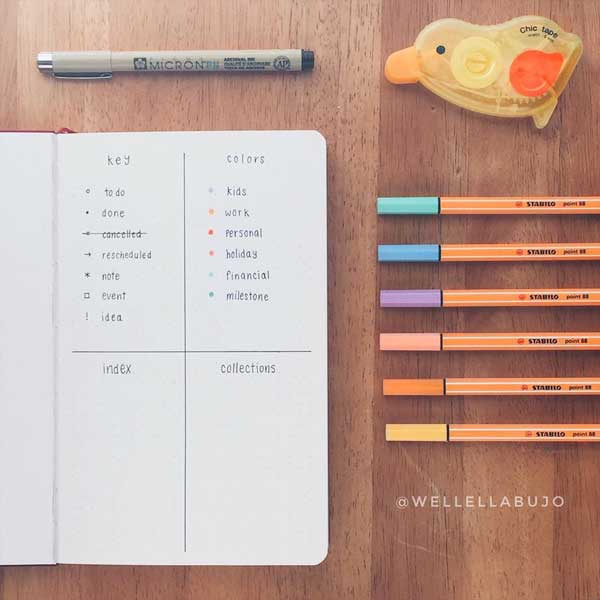
Signifiers
You can also add symbols and characters to your bullets to highlight important things. There are three standard signifiers, but in principle, you can extend the system according to your needs.
We always place signifiers to the left of the bullet points. This allows you to quickly identify what is particularly important to you when you glance over the entries.
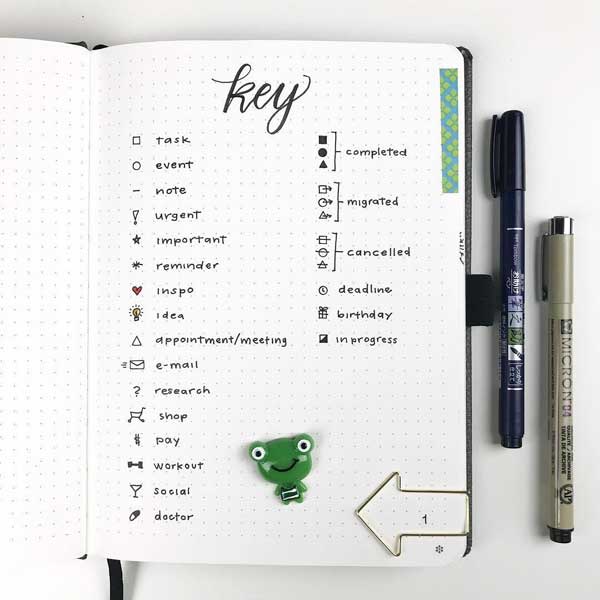
Often not all tasks are equally important. A task should also be marked so that the overview is not lost and you can see at a glance which job has the first priority.
We mark important tasks or events we must never forget with an asterisk (*). You can then make it a rule, for example, always to complete the to-do’s marked with an asterisk first.
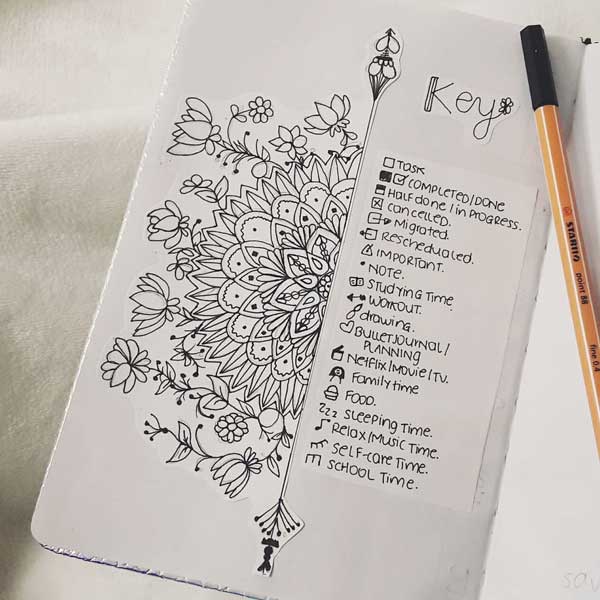
We generally place an exclamation mark (!) at the beginning of the line for particularly important notes, great ideas, inspirational notes, or other things that need to be highlighted.
Also, tasks that aren’t finished yet or impact the future are marked with an eye. Also, if you stumbled across a problem or a new series needs to be added to your Watch List, then you can add a small eye icon to the note.









